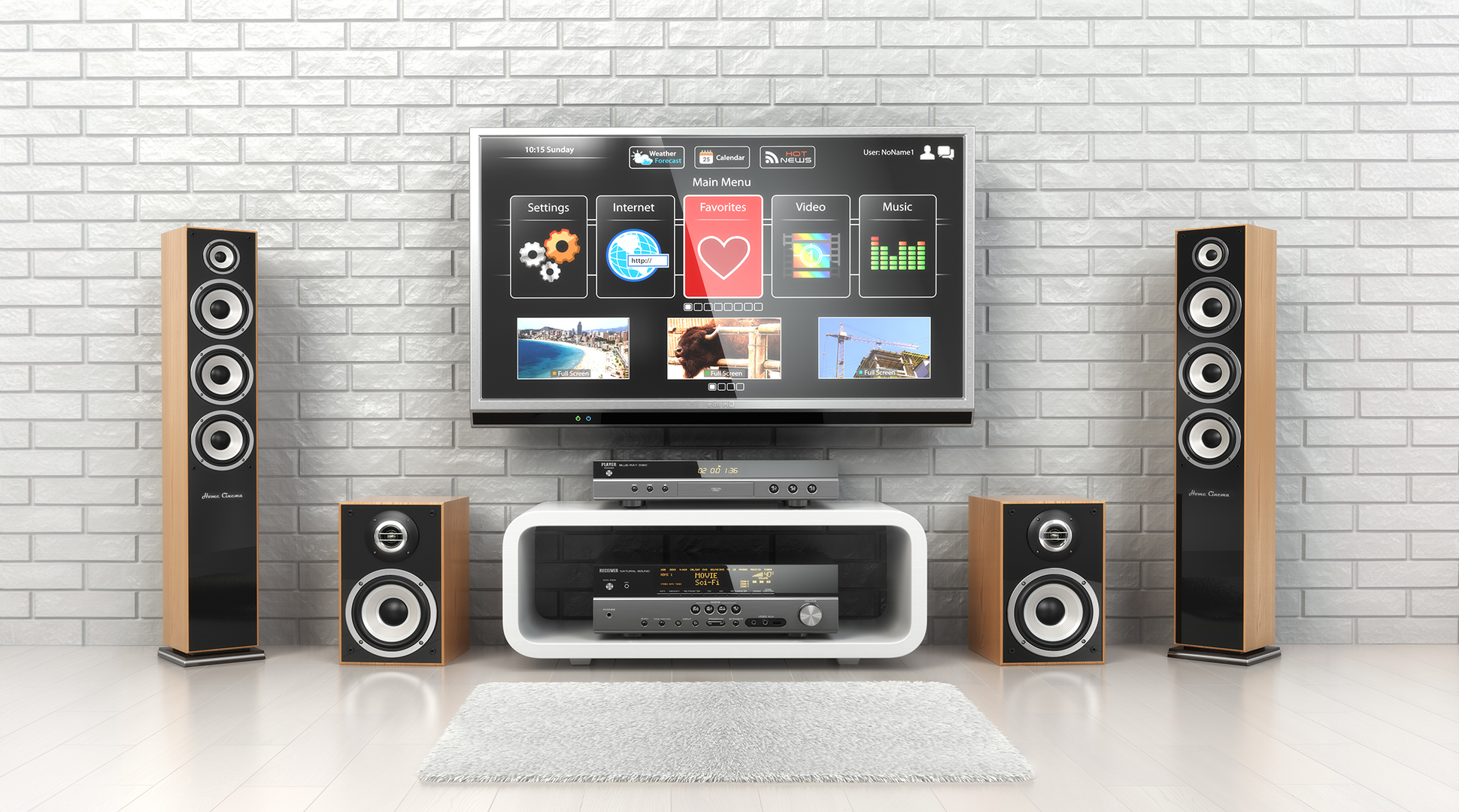Subwoofer Corner Placement: Benefits and Considerations

How Subwoofer Positioning Impacts Sound Quality
The position of a subwoofer has a profound effect on the quality of sound in your space. Corner placement emphasizes low frequencies, making bass sound more powerful. However, it also changes how sound waves interact within the room, which can create areas of intensified or diminished bass.
Sound waves tend to build up in corners, so placing your subwoofer there can result in a louder, more impactful sound. On the other hand, improper placement may lead to "boomy" or muddy audio, where certain frequencies overpower the overall sound. Careful calibration is essential to achieve the perfect balance between loudness and clarity.
Pros and Cons of Subwoofer Corner Placement
Advantages:
Enhanced Bass Output: Corners naturally amplify low-frequency sounds, resulting in a more powerful bass experience.
Improved Sound Coverage: Bass waves travel outward and reflect off walls, creating a uniform sound throughout the room.
Space Efficiency: Corner placement keeps the subwoofer out of the way, freeing up space for other furniture.
Cost-Effective Setup: No need for additional bass enhancement equipment, as the room’s natural acoustics do the work.
Disadvantages:
Bass Overload: Excessive amplification can lead to overly "boomy" bass, which may lack precision.
Room Dependency: The benefits of corner placement vary depending on room size, shape, and furnishings.
Calibration Challenges: Fine-tuning is required to achieve the best sound quality and avoid distortion.
Optimizing Room Acoustics with Corner Subwoofers
To get the most out of your corner subwoofer, pay attention to room acoustics. Large, open spaces may require more than one subwoofer for balanced bass distribution, while smaller rooms might need careful adjustments to avoid overpowering the sound.
Using acoustic treatments like bass traps in the corners can help manage reflections and reduce echoes, ensuring a cleaner and more accurate bass response. Additionally, experimenting with the exact placement of your subwoofer—whether slightly forward or angled within the corner—can further enhance sound quality.
Common Mistakes to Avoid When Placing Subwoofers in Corners
Ignoring Calibration: Simply placing the subwoofer in a corner won’t guarantee perfect sound. Take the time to adjust settings such as crossover frequency, volume, and phase.
Overcrowding the Corner: Keep the corner clear of obstacles like furniture or decorations that might interfere with sound reflections.
Relying Solely on Corner Placement: For larger rooms, consider adding a second subwoofer or using a more centralized placement for better coverage.
Neglecting Room Acoustics: Without addressing room acoustics, corner placement may emphasize unwanted resonances or echoes.
However, achieving optimal corner placement requires careful consideration of room acoustics and potential drawbacks. Room modes and standing waves can sometimes be accentuated in corners, causing uneven bass distribution across different listening positions. To address this, adjustments in subwoofer positioning and possibly incorporating acoustic treatments like bass traps may be necessary.
Despite these considerations, corner placement remains popular for its space-efficient design, maximizing room acoustics, and enhancing overall sound immersion. By experimenting with placement and utilizing room calibration tools, audio enthusiasts can fine-tune their subwoofer setup to achieve balanced bass reproduction and a superior listening experience tailored to their specific room environment.
Benefits of Corner Placement
Enhanced Bass Response: Corner placement is renowned for its ability to enhance bass response. This is primarily due to the way low-frequency sound waves interact with room boundaries. Placing the subwoofer in a corner allows the walls to act as natural amplifiers, resulting in deeper, more resonant bass tones. The corner effectively reinforces the bass frequencies, providing a richer audio experience, especially in larger rooms where bass can otherwise dissipate.
Maximized Room Acoustics: Utilizing corners helps in maximizing room acoustics for better bass output. Bass frequencies tend to accumulate in corners, leading to a perceived increase in bass volume without necessarily increasing the subwoofer’s output level. This phenomenon is beneficial for creating a fuller sound profile and achieving a balanced audio environment across different listening positions in the room.
Space Efficiency: Corner placement offers practical advantages, especially in smaller rooms where floor space is limited. By placing the subwoofer in a corner, you can optimize room layout and keep the subwoofer out of the main listening area, thereby minimizing visual and physical clutter while still enjoying robust bass performance.
Considerations for Corner Placement
While corner placement offers several benefits, it’s essential to consider certain factors to optimize sound quality and avoid potential drawbacks:
Room Modes and Standing Waves: One of the primary considerations when placing a subwoofer in a corner is the potential for room modes and standing waves. Room modes are frequencies at which sound waves resonate within a confined space, such as a room corner. Placing a subwoofer in a corner can sometimes accentuate these resonances, leading to uneven bass response across different frequencies and listening positions. To mitigate this, it’s advisable to experiment with subwoofer positioning within the corner and use room correction tools or acoustic treatments to address any peaks or dips in bass response.
Adjustment and Testing: Achieving optimal corner placement requires careful adjustment and testing. Start by placing the subwoofer in different corners of the room and listen for variations in bass response. Use test tones or bass-heavy music tracks to evaluate the subwoofer’s performance at different frequencies. Fine-tune the placement until you find the position that delivers the most balanced and natural bass reproduction throughout the listening area.
Room Interference and Furniture Placement: Consider the layout of your room and the placement of furniture when opting for corner placement. Surrounding furniture and room layout can influence bass reflections and room acoustics. Ensure that the subwoofer has sufficient space around it to prevent interference from nearby objects or walls. Avoid placing the subwoofer too close to large furniture pieces or reflective surfaces that may alter bass frequencies or cause unwanted vibrations.
Practical Tips for Corner Placement
To optimize corner placement and maximize the benefits:
Experiment with Placement: Try placing the subwoofer in different corners of the room to determine which corner provides the best bass response and overall sound quality.
Use Room Correction Tools: If available, utilize room correction software or audio calibration tools to analyze and adjust the subwoofer’s output based on room acoustics and listening preferences.
Consider Acoustic Treatments: Incorporate bass traps or acoustic panels in room corners to absorb excessive bass frequencies and minimize room modes. This can help in achieving smoother bass response and reducing acoustic anomalies.
FAQ
Q: Why is corner placement recommended for subwoofers?
Corner placement amplifies low frequencies by using walls to reflect sound waves, resulting in more powerful bass.
Q: Can all subwoofers benefit from corner placement?
While most subwoofers perform well in corners, the effectiveness depends on room size, shape, and the subwoofer's design.
Q: How do I prevent bass from sounding too "boomy" in the corner?
Adjust your subwoofer’s settings, such as volume and crossover frequency. Adding bass traps to the room can also help control excessive bass.
Q: Is corner placement suitable for small rooms?
Yes, corner placement is often ideal for small rooms as it maximizes bass without needing additional subwoofers.
Q: Should I use multiple subwoofers for larger rooms?
For larger spaces, using multiple subwoofers ensures better bass distribution and minimizes dead spots.
Conclusion
Placing your subwoofer in the corner is an effective way to enhance bass performance and create an immersive audio experience. By understanding its benefits, addressing potential challenges, and optimizing room acoustics, you can enjoy rich, powerful sound in any space. Whether you’re setting up a home theater or improving your music system, thoughtful corner placement can take your audio to the next level.














